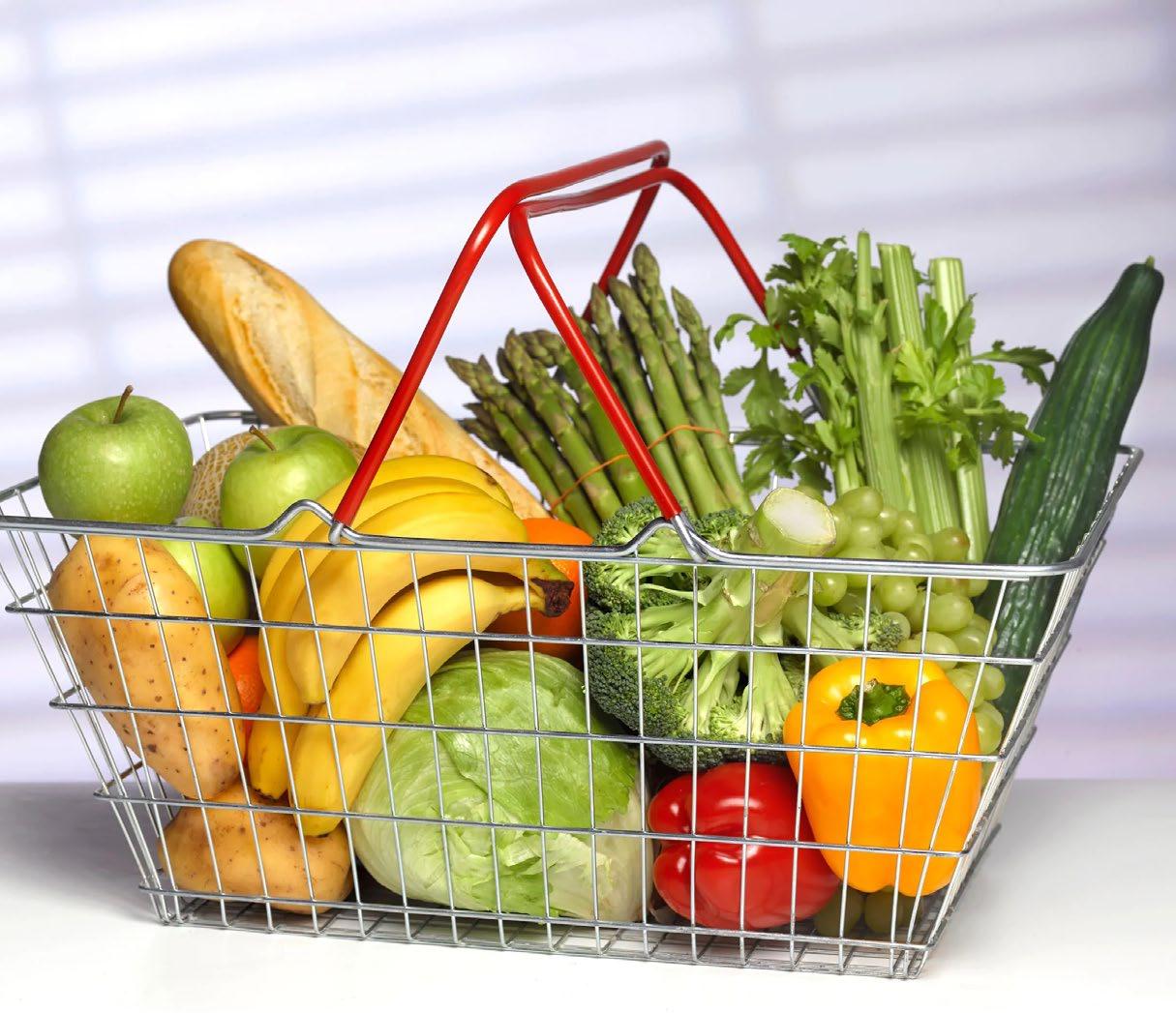
3 minute read
FOOD MARKET FORECASTS
RESEARCH: IGD
FOOD MARKET ‘TO GROW 10%’ BY 2022
THE UK FOOD AND GROCERY MARKET IS SET TO GROW BY 10% BY 2022 FUELLED IN PART BY THEPANDEMIC, ACCORDING TO THE LATEST FORECAST RESEARCH FROM IGD.
The UK food and grocery market is set to grow by 10% – or by £19.1bn to £211bn – between 2019 and 2022, according to the latest market and channel forecast research from IGD. The new report reveals the impact of Covid-19 on the overall market over the next three years with a breakdown of expected implications and performance on individual channels.
The research highlights that the pandemic has accelerated a major shift to online, a channel IGD expects to mostly retain the loyalty of new shoppers gained during the pandemic. Discount will, however, become the fastest-growing channel in 2021 and 2022, as shoppers looking to economise due to rising unemployment while convenience will grow by more than 13%.
CHANNEL FORECASTS 2019 – 2022 ONLINE: UP £7.0BN (59.2%)
Online market share will increase from 6.2% in 2019 to 8.9% in 2022
Online will be the fastest-growing channel in 2020, following dramatic increases in shopper numbers and bigger order sizes
The value of the online channel will overtake that of hypermarkets in 2020
Online will take £1 in every £11 spent on grocery in 2022.
Simon Wainwright, Director of Global Insight at IGD, said: “We forecast e-commerce will gain market share faster than previously predicted, following the dramatic influx of new shoppers and bigger order sizes in 2020 as a result of Covid-19. While we expect growth to pause in 2021, it will later resume, with continuing expansion from Amazon and the launch of online operations by M&S through Ocado supplementing activity by the Big Four.
DISCOUNT: UP £6.3BN (25.4%)
Discount market share will increase from 12.8% in 2019 to 14.6% in 2022
Discount will be the fastest-growing channel in 2021 and 2022
Aldi and Lidl’s rapid expansion is expected to continue
Some variety discounters will see rapid growth as they scale up their focus on grocery, with new openings from B&M and Home Bargains
Wainwright comments: “Though eclipsed by the surge in online sales in 2020, discount will be the fastest growing channel in 2021 and 2022 as unemployment climbs and shoppers across the income spectrum look to economise. Store network expansion will enable this growth, with smaller store formats enabling Aldi and Lidl to boost their reach into urban areas and some variety discounters scaling up their grocery operations.”

CONVENIENCE: UP £5.4BN (13.2%)
Convenience market share will increase from 21.4% in 2019 to 22% in 2022
The channel benefitted significantly from meeting local shoppers’ needs during lockdown
Growth in the channel will moderate over the next two years
Wainwright comments: “Having benefited significantly from meeting local needs during lockdown, growth for convenience stores will slow in 2021 and 2022. There is a key opportunity for stores that develop their role as destinations for local community needs going forward, but the slow recovery of trading in city centres and transient locations is likely to affect overall channel performance.”
SUPERMARKETS: UP £0.7BN (+0.8%). HYPERMARKETS: DOWN £0.1BN (0.3%)
Hypermarket market share will decrease from 8.4% in 2019 to 7.6% in 2022
Supermarket market share will decrease from 46.1% in 2019 to 42.3% in 2022
After a boost to sales in 2020 from the pandemic, supermarket growth will turn negative by 2022
Wainwright comments:: “Strong growth at the start of the pandemic – driven by shoppers stocking up and preferring spacious stores – has receded. We expect hypermarkets to revert to sales declines as more shoppers migrate to other channels. After a boost to sales in 2020 from Covid-19, supermarket growth will turn negative by 2022. The channel will lose ground, particularly to discount and online, though it will defend its share better than hypermarkets.
“Retaining the loyalty of shoppers who switched to them at the start of the pandemic will be the priority for operators of large stores. Making stores easier to shop while also differentiating through their range and emphasising value will be vital as stores pivot towards more functional retailing.”








